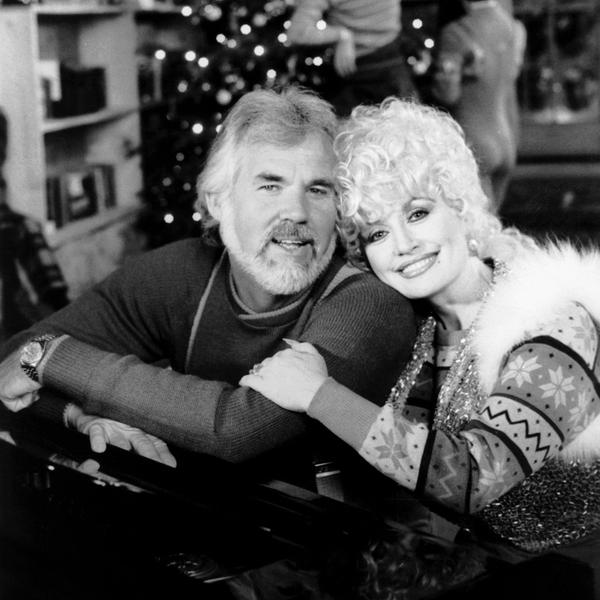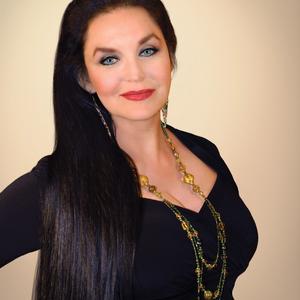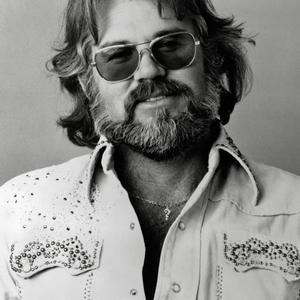




Link copied

Everyone knows Kenny Rogers’ solo hits, and can probably remember all the lyrics to karaoke staples like ‘The Gambler,’ ‘Lucille,’ ‘Ruby, Don’t Take Your Love To Town’ and ‘Coward of the County’ – even without the prompter.
But if you’re going to hit the karaoke in style – along with your best mates – then Rogers’ peerless duets are the ones to select - and boy, did Kenny know it.
Delving into the array of collaborations from across his career, Holler presents the ultimate list to the duets of ‘The Gambler’, Mr Kenny Rogers:
Every Time Two Fools Collide
Back in 1977, so the story goes, country music star Dottie West - another of Larry Butler’s artists – was recording this song, when Rogers suddenly entered the studio and started singing along. Rewinding slightly, everyone’s version of the tale is slightly different, but to cut a long story short; her session over-ran and he arrived early for his to listen to West nailing her vocals.
They both said they’d love to sing a duet with each other sometime, “just for the fun of it.” Minutes later, it was agreed they might as well try the song she’d just been singing, so Rogers sang the second verse, “and fortunately” Rogers said, “it was just wonderful from the minute we started. That started a long and very successful relationship between me and her.”
All I Ever Need Is You
The Rogers-West collaboration was a match made in heaven, giving her fading career a big boost and lending him some credibility with the country music crowd.
They made a second album of duets called Classics, covering 10 of their favourite songs. According to Butler they had loads of ballads, but nothing you could really sing along to; when they happened upon ‘All I Ever Need Is You’, they hit the jackpot.
Don't Fall In Love With A Dreamer
Looked at superficially, you might see this duet with Kim Carnes as a strategic embrace of Rogers’ growing pop audience. But that would ignore Carnes’ early music career as one of the New Christy Minstrels, alongside Rogers and Dave Ellingson, who later became her husband and songwriting partner.
According to Carnes, Rogers called her and Ellingson to ask if they’d like to work on a concept album for him; Rogers’ only demand was that the album must have a modern cowboy theme. They liked the challenge, and conceived a story, coming up with characters and working backwards to write the songs. The resulting album was Gideon, featuring this duet.
We've Got Tonight
Lest we forget, Bob Seger had already taken this ballad to no. 13 in 1978, while there had been country covers from Dottie West and Conway Twitty on top of that. Nevertheless, this version took the song to another level while most definitely embracing Rogers’ commercial side.
For him, it was a no-brainer - if he could convince the fast-rising Scottish pop star, Sheena Easton, to team up with him. “I liked the idea of recording with Sheena,” he said. “I thought the contrast in styles – I'm so throaty and she’s so trained and pure – would really work well”. When you watch the video, you’ll realise the duo’s outfits deserve an award alone.
Islands In The Stream
When Kenny Rogers signed to RCA Records late in 1983, his path crossed with Bee Gees lead singer, Barry Gibb, fresh from making the album Guilty with Barbra Streisand. Gibb and Rogers soon started working on an album of country-based songs with Bee Gees harmonies, Eyes That See In The Dark.
As a bonus, Barry and his brothers, Robin and Maurice, already had an R&B-style song they’d originally written for Marvin Gaye and named after the Ernest Hemingway novel, Islands in The Stream. With a slight rejig, they gifted it to Rogers as a solo cut, but however hard they tried, he just didn’t like how it sounded and was ready to give up.
Then, Gibb said: “You know what we need? We need Dolly Parton.” By chance, she happened to be at the very same studio, and, according to Rogers, as soon as they’d tracked her down the die was cast; “She came marching into the room - once she started singing, the song was never the same. It took on a personality of its own.”
The single became one of his biggest hits, topping the country and pop charts, winning a bunch of accolades including Best Country single from the AMA, and leading to further collaborations, plus the inevitable TV special and tour. “We didn’t plan it,” said Parton. “People just put us together because they liked us together. We did that one song and out of that came years of concerts and friendship.”
What About Me?
This unusual, middle-of-the-road love triangle ballad was performed with Rogers’ old friend, Kim Carnes (four years after their duet on ‘Don’t Fall In Love With A Dreamer’) and R&B balladeer James Ingram.
There are, as they say, three of them in this recorded relationship, which sparkles as Kim tries to decide which guy she’d rather end up with. It was a pop hit, but largely unloved by the country music crowd.
Rogers deemed it beautiful, describing it as a “three-way love song”. Originally, Rogers was due to perform it opposite Lionel Richie and Barbra Streisand, but once Richie backed out, so did Streisand.
Then, Olivia Newton-John and Jeffrey Osborne were due to step up, but both had scheduling conflicts. Once you’ve hear the Carnes-Ingram-Rogers trio however, it’s hard to see how anyone else could have done it.
Real Love
Dolly Parton said that Rogers owed her a favour thanks to ‘Islands in The Stream’, and her producer David Malloy reckoned they should “cash in on that favour and do a big duet”.
Malloy felt she sounded best when the melodies moved quickly, but Rogers needed longer notes to establish the sound of his throat. So with this in mind Malloy wrote ‘Real Love’ with Spady Brannon and keyboard player Randy McCormick – working as a single and title track for latest album.
Make No Mistake, She's Mine
Filled with regret and topped up with jealousy, it feels like Rogers and Milsap are discussing the one that got away – who might just be, professionally speaking, playing the field.
While definitely a couple of very possessive men, it’s not quite in the vengeful ‘Ruby Don’t Take Your Love To Town’ league. Understandably, the duet won a Grammy for Best Country Collaboration with Vocals.
Mary Did You Know
This earworm of a song, from Rogers’ 1996 Christmas album The Gift, manages to transcend its target audience thanks to slick production and those huge, heavenly matched voices.
It apparently took songwriter Mark Lowry nearly seven years to perfect the lyrics by 1984, with the music added by Buddy Greene in 1991 – the sentiments and Mary’s role in the song having been discussed ever since.
Buy Me A Rose
There’s something magical in this divine, chart-topping duet with Alison Krauss from Rogers’ 1999 album She Rides Wild Horses.
Performing it live, Rogers introduces the song as the epitome of a poor guy just being on the wrong page – and singlehandedly proving to him that men are from Mars and women are from Venus!
My World Is Over
This is one that almost got away – one of those classic country duets about time stopping, and the pointlessness of continuing to exist without the other person. It was written by Whitney Duncan herself, before she went on to appear in several reality TV shows.
Listening to it now, it feels incredibly underrated, and the kind of thing Faith Hill and Tim McGraw might have made massive. Perhaps they still will…
Lady
Another fruitful long-term friendship for Rogers came in the shape of hit-machine Lionel Richie. The pair initially paired up because Rogers was a bit of a fan. The two music-makers met over a grand piano in a Vegas hotel ballroom, and Rogers asked if he had any new compositions up his sleeve. Richie starting playing the first bit of ‘Lady’, and Rogers loved it.
Written and produced by Richie, ‘Lady’ went on to top the country, pop and R&B charts during the same week in 1980 – some 32 years later, the pals teamed up again when Richie made Tuskegee, choosing to duet with Rogers on the classic. As Rogers said; “The idea was that Lionel would come from R&B and I'd come from country, and we'd meet somewhere in pop.” It’s an idea that shouldn’t work, but it does.
You Can't Make Old Friends
When Rogers got a new deal with Warner Bros Nashville, he was able to make his first big-budget release in seven years in You Can't Make Old Friends, which he promoted with a major tour and even an appearance in the coveted legends slot at Glastonbury Festival. Before the album’s October 2013 release came the title-track duet with his “best friend” Dolly Parton. “Working with Dolly is always a little like going home,” he said. “Everything felt comfortable.”
When you listen to the lyrics it’s hard not to have a lump in the throat. They ask: “What will I do when you’re gone?” and it feels tailored to their lifelong friendship. “How will I sing when you’re gone, because it won’t sound the same / who’ll join in on those harmony parts, when I call your name?” You could almost say it anticipates one of them departing. “When I’m out on the stage all alone and I hear the music begin / we all know the show must go on, but you can’t make old friends”.
Four years later, Rogers held his final live show at Nashville's Bridgestone Arena - featuring guests Lionel Richie and Dolly Parton - before passing away three years later. It feels incredibly poignant hearing it now.
Listen and subscribe to our Best Kenny Rogers Duets Playlist below:

For more on Kenny Rogers, see below:
READ MORE:





